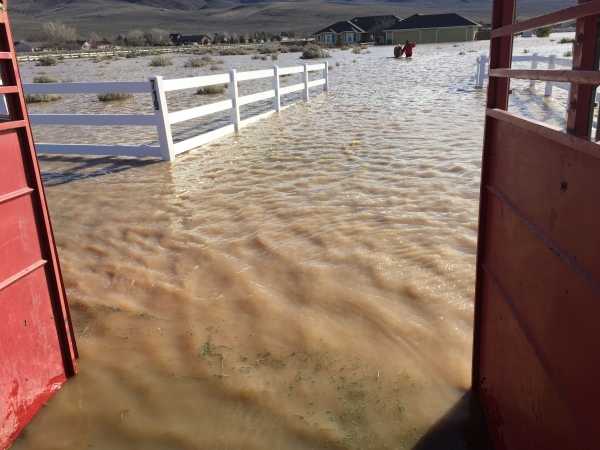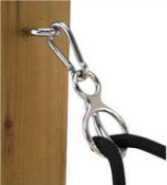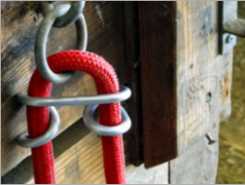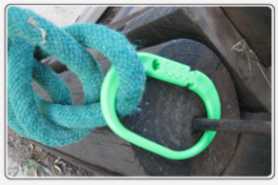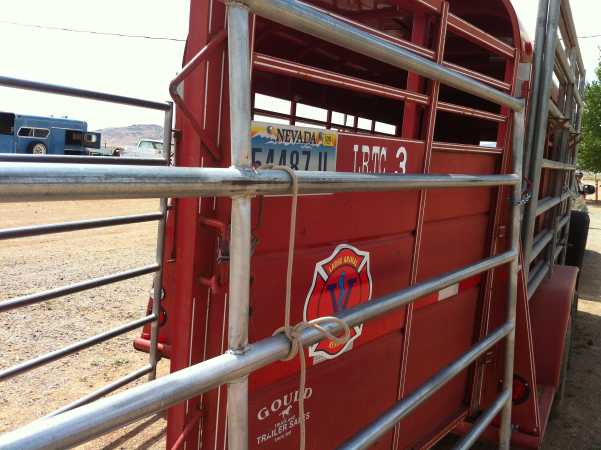Whether actually carried on the trailer or obtained on-site where horses or other livestock need to be removed, the following equipment is useful for rapid and safe loading. (We carry this equipment on most of the team's trailers.)
- 12 foot long heavy duty corral panels
- Several lengths of chain with snap links
- Lengths of utility cord
- "Blocker" Tie Rings (or a similar product)
- Bailing twine
- Horse handling stick
Additionally, most of our trailers are stock type with center swing gates that divide the trailer into two separate compartments. The latches that hold these gates can come loose on rough roads allowing the gates to swing while in transit. We carry a length of chain and a snap link used exclusively for securing the gate.
Divider gate chained open. (Note electrical wiring run in conduit for protection.)
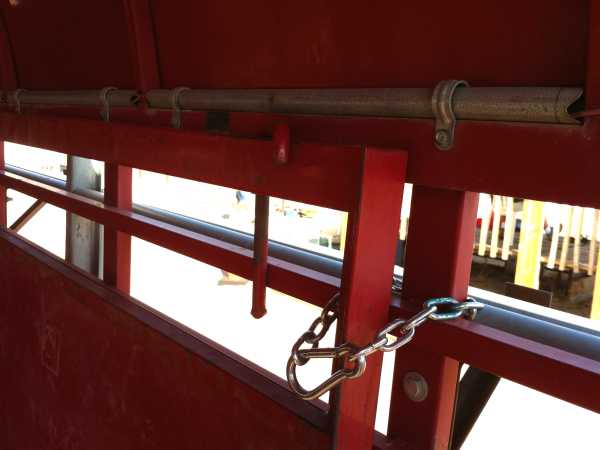
Divider gate chained shut.
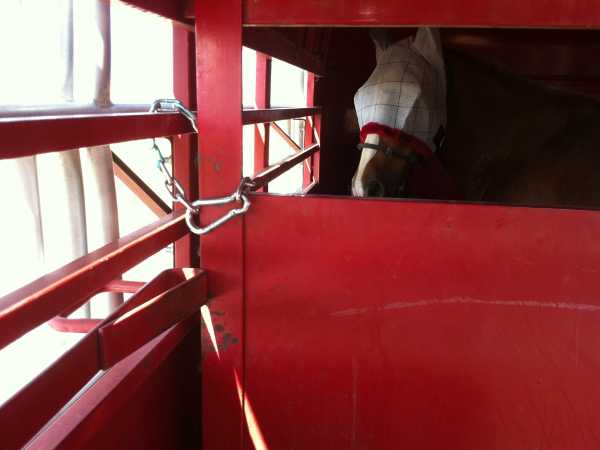
"Blocker Tie Ring" allows for some slippage if horse falls.
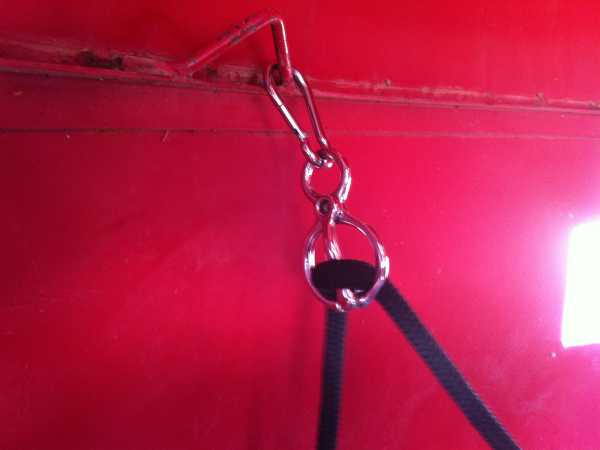
Double wrap for horses that pull, but will still allow some slippage.
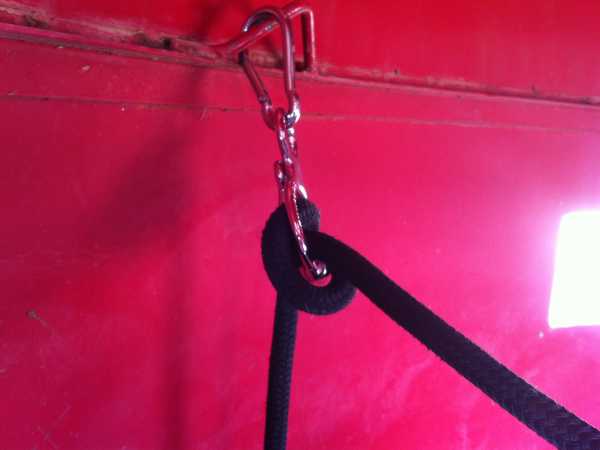
Chains, ropes and other equipment are carried in utility boxes mounted on the trailers.

(For a more complete discussion on equipment carried on the trailers, please click here.)
A note about trailer ties
A number of horses have suffered serious or fatal neck injuries when tied fast inside trailers and the trailer was involved in an accident or the driver had to make an evasive maneuver and the horse fell in the trailer. We recommend that if you tie your horses in your trailers, that you use some kind of break-away or limited slip device for securing the horses while inside. Even a loop made of a couple wraps of bailing twine can make do, with the loop tied to the tie ring and the horse's lead tied to the twine loop, as it will restrain the horse but can break in an emergency.
We carry bailing twine on all of our rescue trailers however we prefer to use Blocker Tie Rings. There are several new products out that we expect will perform similarly well.
|




